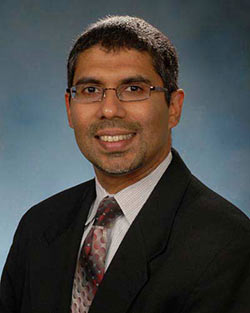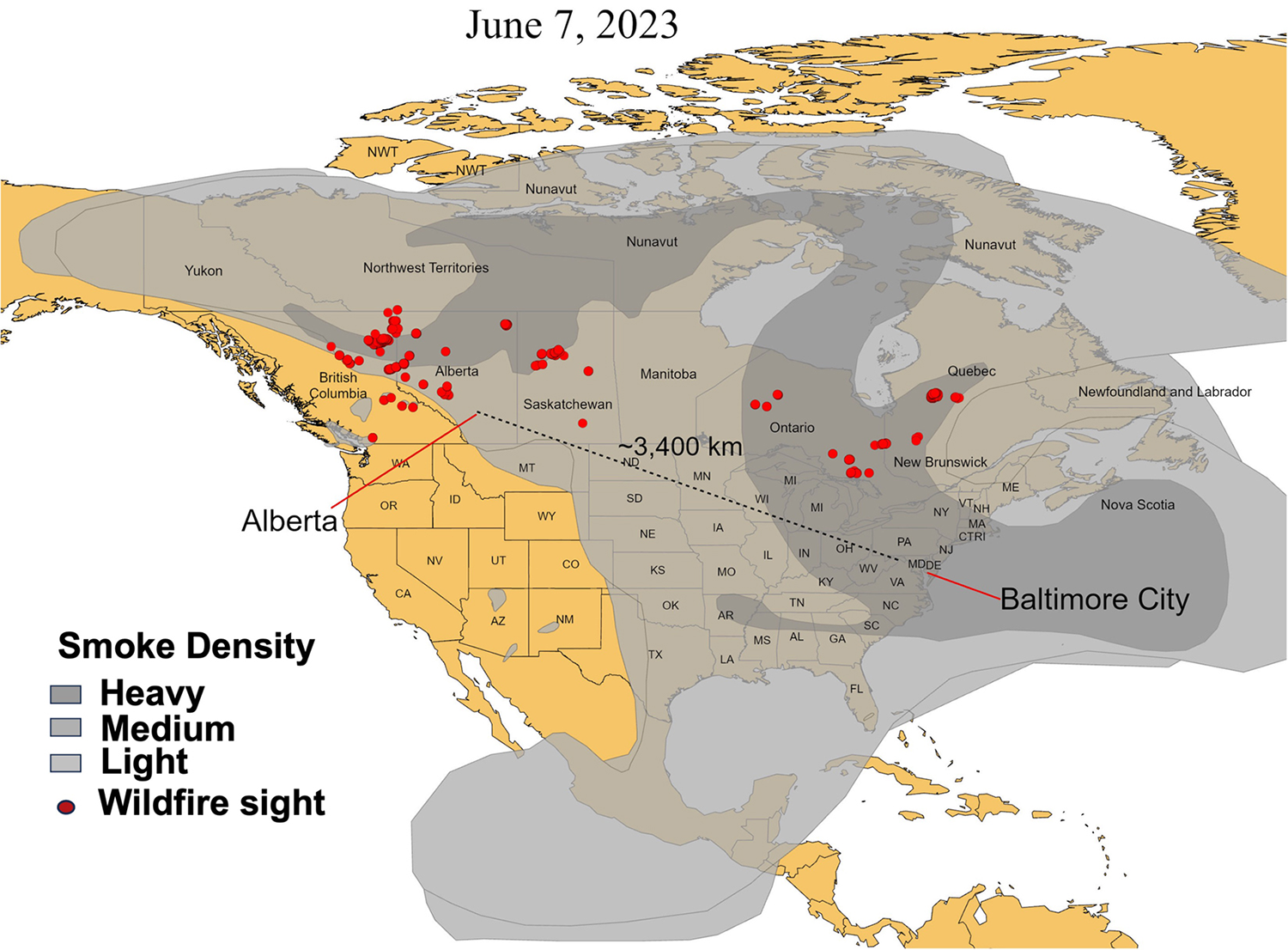News — Wildfire smoke has long been known to exacerbate health problems like heart disease, lung conditions, and asthma, but now a new study finds that smoke from these fires can lead to poor health thousands of miles away. Researchers from the found that medical visits for heart and lung problems rose by nearly 20 percent during six days in June, 2023, when smoke from Western Canadian wildfires drifted across the country, leading to very poor air quality days in Baltimore and the surrounding region.
The new findings were published today in the journal .
During the summer of 2023, severe Canadian wildfires created a vast plume that drifted more than 2,000 miles across the country, leading to poor air quality on the East Coast of the United States, and many individuals experiencing breathing issues that led them to the doctor’s office.
“Baltimore had very dark skies, and we could all smell the smoke in the air,” said pulmonary critical care fellow at the University of Maryland School of Medicine (UMSOM) who is the first author on the study. “But most importantly, my patients came in to me saying they were coughing quite a bit more and needed their medications more often, so they felt much sicker than they usually did when these wildfires occurred.” Dr. Maldarelli is also a resident in Pulmonary and Critical Care Medicine at the University of Maryland Medical Center.
To determine whether the smoke-filled days led to quantifiable health consequences, she partnered with data scientists and visualization experts at the UM-IHC, which has access to nearly 2 million de-identified patient records from the University of Maryland Medical System (UMMS).
Watch the Video

The researchers analyzed satellite data and Environmental Protection Agency (EPA) data to identify six “hotspot” days in June 2023 with high levels of wildfire smoke-related air pollution in the Maryland area. These were days that exceeded the EPA’s standards for safe air quality in all 23 counties in Maryland.
The team then culled through the de-identified electronic health records from UMMS, comparing medical visits for heart-lung or cardiopulmonary conditions from June 2023 with medical visits during June 2018 and June 2019. These included emergency department visits, hospital admissions, and outpatient clinic visits.
“We found that hotspot days were associated with an 18 percent increased likelihood of patients going to the doctor for complications related to a cardiopulmonary condition,” said study corresponding author , Professor of Medicine at UMSOM and Co-Executive Director of the UM-IHC. “We also found a 55 percent increase in the risk for an outpatient visit for heart and lung conditions; these patients tended to be older, non-smokers, and more socio-economically affluent than typical patients who see their doctors for cardiovascular conditions on good air quality days.”

That finding could highlight the importance of healthcare access and may indicate that more economically disadvantaged patients are not getting the medical care they need on high-risk days filled with wildfire smoke.
With more climate events expected in the future, doctors may require better tools to help disadvantaged patients on hotspot days.
“We have the opportunity to leverage the capabilities of the UM-IHC to proactively identify patients who are most at risk and provide them with anticipatory care,” said UMSOM Dean , who is the John Z. and Akiko K. Bowers Distinguished Professor and vice president for medical affairs at the University of Maryland, Baltimore. “There may be crucial ways we can prevent cardiovascular complications on polluted smoke air days simply by providing them with telehealth visits or other ways to access care.”

Amir Sapkota, PhD, and Hyeonjin Song, PhD, of the University of Maryland School of Public Health, performed the satellite and EPA analyses for the study. Study co-authors also included faculty from the University of Maryland, College Park, the University of Maryland School of Pharmacy, and the University of Maryland Medical System.
“Being able to access clinical data at a granular level and our ability to apply advanced analytical tools such as this is critical and essential to the future of health care and enables UMMS to be at the forefront of innovative medicine that will help drive patient care in the years ahead,” said study co-author Warren D’Souza, PhD, Co-Director of the UM-IHC and Senior Vice President/Chief Innovation Officer at UMMS.
Funding for the study was provided by Montgomery County, Maryland, and The University of Maryland Strategic Partnership: MPowering the State, a formal collaboration between the University of Maryland, College Park and the University of Maryland, Baltimore.




